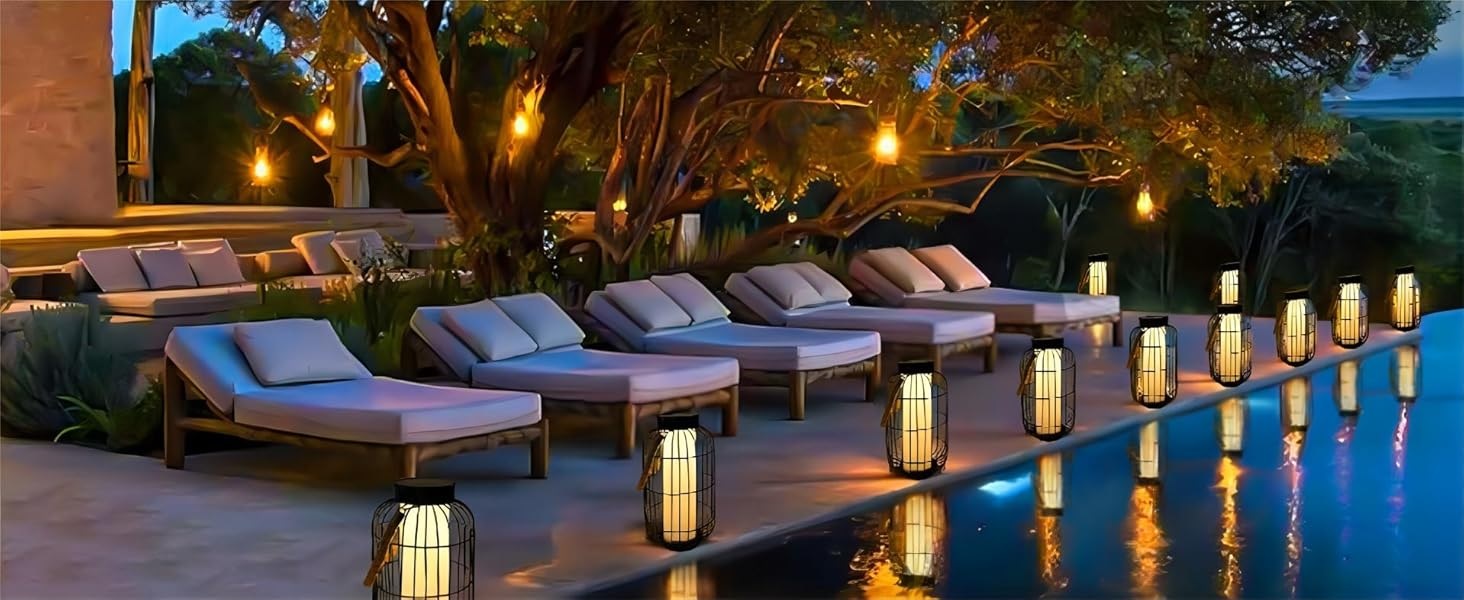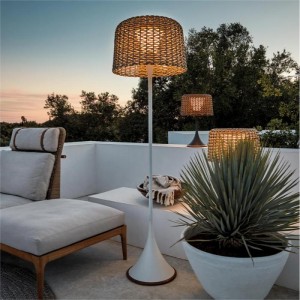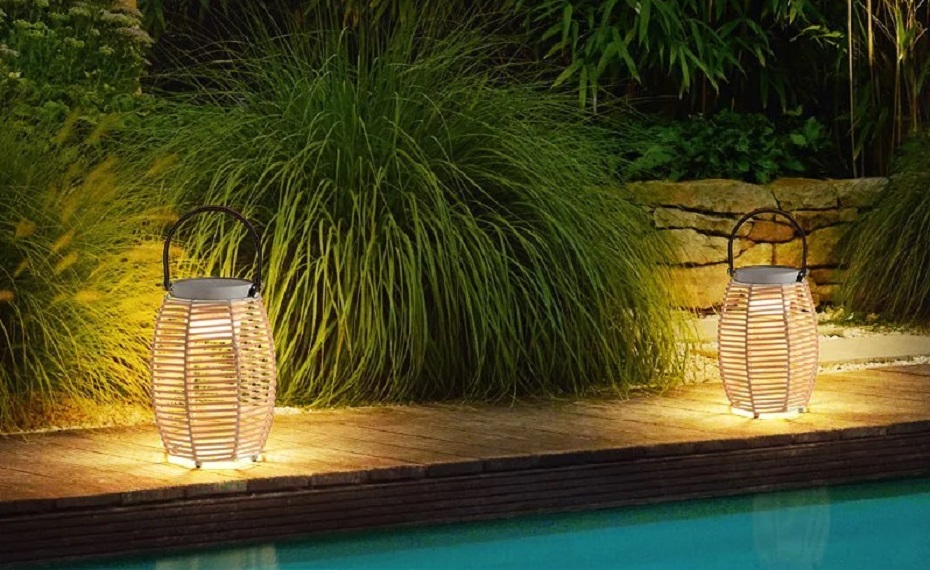With the continuous improvement of environmental awareness and the widespread popularity of energy-saving products, more and more people choose to install solar garden lights to improve the lighting effect of the garden and save energy. However, faced with the various specifications and powers of solar lights on the market, consumers are often confused: what power should be selected for solar garden lights?
This article will deeply explore the various factors that affect the power selection of solar garden lights, and provide you with professional advice to help you choose the most suitable power.
1. What is the power of a solar garden light?
Power is the rate at which the solar light source consumes electrical energy, usually expressed in watts (W). The power directly affects the brightness of the light, and also determines the charging requirements of the solar panel and the battery capacity. If the power is too small, the light will be dim and cannot meet the lighting needs; if the power is too large, the battery may be exhausted quickly and cannot be illuminated all night. Therefore, when choosing a solar garden light, it is very important to choose the power reasonably.
2. The importance of solar garden light power
The power determines the lighting effect of the lamp, and choosing the appropriate power is the key to ensure the efficient operation of the solar garden light. Too low power cannot provide sufficient brightness, resulting in insufficient garden lighting; too high power may cause the solar panel to fail to provide enough energy, and the battery cannot maintain the brightness of the lamp for a long time. Therefore, the choice of power directly affects the service life, lighting effect and overall performance of the lamp.
3. Key factors in power selection
When choosing the appropriate power of solar garden lights, the following factors need to be considered:
3.1 Lighting needs
Different lighting needs determine the power selection. For example:
Decorative lighting: If the garden lights are mainly used for decoration, emphasizing the atmosphere rather than strong light, usually choose low-power solar lights of 3W to 10W. Such lamps can create a warm atmosphere and are suitable for scenes such as garden paths and outdoor restaurants.
Functional lighting: If the garden lights are mainly used for safety lighting or high-brightness functional lighting (such as passages, doorways, parking areas, etc.), it is recommended to choose medium-to-high-power solar lights of 10W to 30W to ensure that they can provide sufficient brightness to ensure clear vision.
3.2 Courtyard Area
The size of the courtyard directly affects the power selection of solar lights. For small courtyards, 3W to 10W lamps can usually provide sufficient light; for large courtyards or places where a larger area needs to be illuminated, it is recommended to choose higher power lamps, such as 20W to 40W products, to ensure uniform light and sufficient brightness.
3.3 Sunlight conditions
The sunlight conditions at the installation site are an important factor affecting the power selection. If the courtyard is located in an area with plenty of sunlight, the solar panels can fully absorb solar energy, and you can choose a slightly higher power lamp; on the contrary, if the courtyard is located in an area with more shadows or shorter sunshine time, it is recommended to choose a lower power lamp to avoid the battery not being fully charged, resulting in the lamp not being able to work continuously.
3.4 Lighting duration
Usually, solar garden lights turn on automatically after sunset, and the duration of continuous lighting depends on the battery capacity and the power of the lamp. The greater the power, the faster the battery consumes power, and the duration of the lamp lighting will be reduced accordingly. Therefore, considering the actual lighting needs at night, it is recommended to choose a moderate power so that the lamp can continue to work all night.
3.5 Battery capacity and solar panel efficiency
The battery capacity of a solar lamp determines the amount of electricity that can be stored, while the efficiency of the solar panel determines the charging speed of the battery. If a high-power solar lamp is selected, but the battery capacity is small or the solar panel efficiency is low, the night lighting duration may be shortened. Therefore, when selecting a lamp, it is necessary to ensure that the battery capacity and the efficiency of the solar panel can match the selected power.

4. Common solar garden light power classification
The power of solar garden lights is usually classified according to usage requirements and installation locations. The following are common power ranges and their applicable scenarios:
4.1 Low-power solar garden lights (3W to 10W)
This type of lamp is mainly used for decorative lighting, suitable for garden paths, courtyard walls, etc. Low-power lamps usually emit soft light and can create a comfortable atmosphere.
4.2 Medium-power solar garden lights (10W to 20W)
Suitable for small and medium-sized courtyards or areas that require moderate lighting, such as terraces, front doors, parking areas, etc. They can provide sufficient brightness while maintaining a long lighting time, which is an ideal choice for combining functionality and aesthetics.
4.3 High-power solar garden lights (above 20W)
High-power lamps are usually used in large courtyards or large outdoor spaces, such as public parks, outdoor parking lots, etc. These lamps have higher brightness and cover a wider area, suitable for scenes that require high brightness and large-scale lighting.
5. How to choose the appropriate power of solar garden lights?
5.1 Identify lighting needs
First, the main purpose of the garden light should be clarified. If it is mainly used for decoration or creating an atmosphere, you can choose a low-power lamp; if high-brightness functional lighting is required, it is recommended to choose a medium or high-power lamp to meet the needs of night use.
5.2 Measure the area of the courtyard
Determine the required power according to the actual area of the courtyard. Ensure that the light covers every corner while ensuring that there is no excessive waste.
5.3 Consider local climatic conditions
Areas with sufficient sunlight time can support the normal use of high-power lamps, while areas with poor sunlight conditions can extend the lighting time of the lamps by appropriately choosing low-power lamps.
6. Common misunderstandings about solar garden light power
6.1 The higher the power, the better
The higher the power, the better. When choosing solar garden lights, you need to decide the power according to actual needs. High-power lamps are brighter, but they also consume more power faster, so they need to be matched with larger battery capacity and more efficient solar panels.
6.2 Ignoring lighting time
Many consumers only pay attention to the brightness of the lamps, but ignore the lighting time of the lamps. Choosing the right power can ensure that the lamps continue to work at night and will not go out early due to battery exhaustion.
6.3 Ignoring environmental factors
In areas with poor lighting conditions, choosing lamps with too high power may cause the battery to not be fully charged, which will affect the normal operation of the lamps. The power should be reasonably selected according to the sunlight conditions.
To choose the right solar garden light power, you need to consider the area of the garden, lighting requirements, sunshine conditions, battery capacity and other factors. For ordinary family gardens, it is recommended to choose lamps with a power between 3W and 10W for decorative lighting, while for functional lighting areas that require high brightness, you can choose lamps with a power between 10W and 30W. The most important thing is to ensure a reasonable combination of power, solar panel efficiency and battery capacity to obtain the best lighting effect.
Post time: Sep-14-2024









